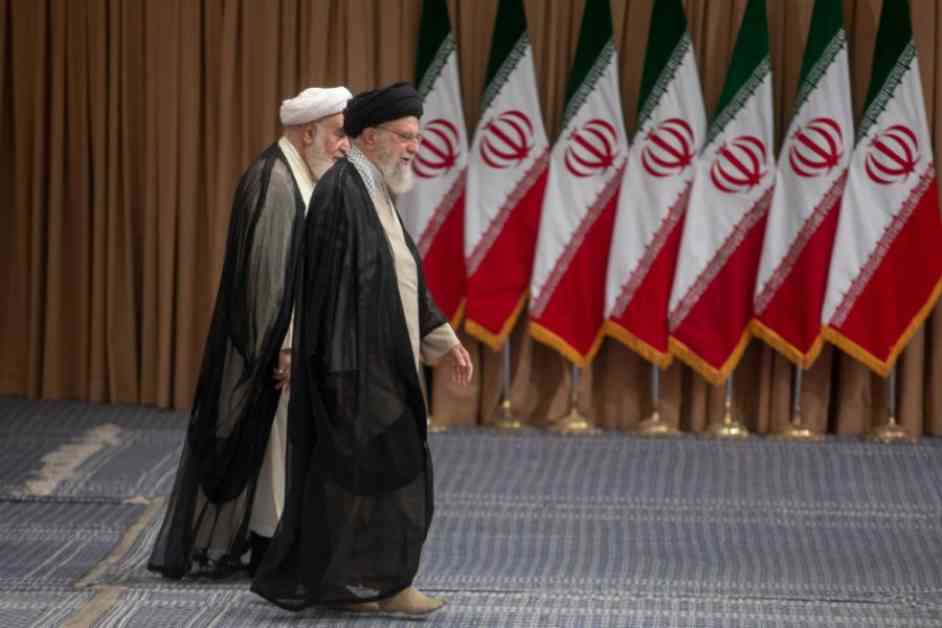Iranian Regime in Crisis: Unraveling the Internal Turmoil
The Iranian regime, under the leadership of supreme leader Ali Khamenei, finds itself in a state of turmoil as internal and external pressures mount. Seyed Abbas Araghchi, the foreign minister in President Masoud Pezeshkian’s Cabinet, has been tasked with navigating the complex web of international relations, particularly with the United States. In a recent interview with the Iranian National Radio and Television Agency, Araghchi shed light on the central tenets of Iran’s foreign policy, highlighting the irreconcilable tensions with the U.S.
Challenges in U.S.-Iran Relations
Araghchi emphasized that the support for the Axis of Resistance, deeply ingrained in the Islamic Republic’s beliefs and ideals, remains a non-negotiable policy. The longstanding hostilities with the United States, exacerbated by recent events such as the Gaza war, are deeply rooted in fundamental differences that are unlikely to be resolved. Iran’s objective, as articulated by Araghchi, is not to seek an end to hostility but rather to manage these tensions effectively to minimize the costs imposed on the regime.
The mullahs’ regime, characterized by its archaic governance and inability to address the demands of a restless population clamoring for democracy and economic stability, has resorted to perpetuating crises in the region as a means of self-preservation. Despite occasional tactical retreats, the regime remains steadfast in its commitment to this survival strategy, as evidenced by its continued support for Hamas and other militant groups fueling conflict in the region.
Internal Upheaval and Popular Discontent
To quell internal dissent and stave off potential uprisings, the Iranian regime has resorted to bolstering its military involvement in conflicts such as the Gaza war, under the guise of proactive foreign policy. The regime’s engagement in both on-the-ground activities and diplomatic maneuvers reflects its determination to assert its influence and protect its interests, even at the cost of escalating tensions with the U.S. and other adversaries.
The recent parliamentary and presidential elections in Iran, marked by widespread boycotts and disenchantment among the populace, have underscored the deep-seated discontent simmering within Iranian society. Khamenei, cognizant of the looming threat of another uprising that could spell the regime’s downfall, is compelled to recalibrate his political strategies. The regime’s reliance on harsh repression tactics to suppress dissent is increasingly challenged by the growing influence of Resistance Units affiliated with groups like the MEK, posing a significant threat to the regime’s grip on power.
Nuclear Ambitions and International Relations
The regime’s nuclear ambitions, a longstanding point of contention in its relations with the international community, serve as a potent bargaining chip in its negotiations with Europe and the U.S. Khamenei’s reluctance to fully comply with the terms of the Joint Comprehensive Plan of Action (JCPOA) reflects the regime’s strategic calculus to leverage its nuclear capabilities for maximum advantage without relinquishing its pursuit of nuclear weapons.
Despite the regime’s professed commitment to scaling back uranium enrichment and allowing inspections by the International Atomic Energy Agency to secure sanctions relief, the underlying objective remains to retain the option of resuming enrichment at will. Iran’s history of clandestine nuclear activities and its persistent pursuit of nuclear weapons underscore the regime’s unwavering determination to wield nuclear capabilities as a means of coercion and deterrence.
As Khamenei grapples with internal dissent, economic challenges, and international isolation, his strategy of tactical retreats and calculated concessions aims to placate a restive population and forestall the looming specter of another uprising. The recent visit of Qatar’s Foreign Minister to Tehran and Khamenei’s tempered response to provocations from Israel suggest a nuanced approach to diplomacy aimed at securing concessions while averting a catastrophic escalation of conflicts.
In conclusion, the Iranian regime’s precarious balancing act between internal stability and external relations underscores the deep-seated vulnerabilities that threaten its survival. The regime’s reliance on repressive tactics, support for militant proxies, and nuclear brinkmanship reflects a regime teetering on the brink of collapse. As internal dissent simmers and external pressures mount, Khamenei’s ability to navigate these treacherous waters will determine the regime’s fate in the face of mounting challenges.

